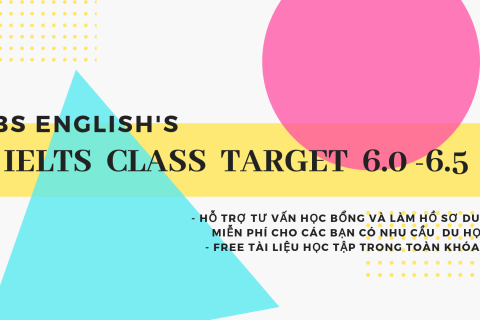Part 3 của phần speaking IELTS sẽ diễn ra trong khoảng từ 4 đến 5 phút. Một điểm quan trọng mà bạn cần chú ý trong part 3 đó là trong khi part 1 và 2 “you’re gonna talk about you, about your experience” thì part 3 sẽ không còn như thế nữa, không còn về bạn và cuộc sống của bạn nữa. Vấn đề được hỏi trong các câu hỏi part 3 sẽ chung hơn, tổng quát hơn, sẽ hỏi về “other people or ―society in general or even global issue”.
Tuy nhiên sẽ có một sự liên kết chặt chẽ giữa part 2 và part 3 ở phần topic được hỏi. Cùng xoay quanh chủ đề đó chỉ có tính chất câu hỏi là khác nhau.
Ví dụ: Trong part 2, topic là: “Describe an interesting trip you have been on”. (You described a trip to Da Nang.) Vậy trong part 3, giám khảo có thể hỏi bạn một câu như thế này: “Can you tell me about different types of trips and holidays in your country?” Hoặc là hỏi về “the importance of tourism” chứ họ sẽ không hỏi trong part 3 những câu hỏi mang tính cá nhân như “Your favourite ways of travelling” hay “Why you like travelling”
Việc hiểu rõ điều này là cực kỳ quan trọng để điều chỉnh câu trả lời của bạn, để bạn đưa ra một câu trả lời mang tính “general ideas” (ý kiến tổng quan) chứ không phải dựa trên “your personal information”, không phải dựa trên những thông tin cá nhân của bạn nữa. Những bạn nào tiếp tục trả lời bằng cách nói về bản thân mình sẽ không được điểm trong part 3.
Và một lần nữa mình nhắc lại, người ta không chấm idea của bạn, người ta chấm khả năng trình bày ideas của bạn vậy đừng quá lo lắng là idea của mình sai, đi ngược lại xu thế, đạo đức hay idea tẻ nhạt vì chả ai quan tâm đâu ạ.
Part 3 được xem là phần khó nhất trong toàn bộ bài speaking vì câu hỏi được đưa ra thường dài hơn, phức tạp hơn và yêu cầu cao hơn về mặt ngôn ngữ khi bạn phải đưa ra ý kiến, quan điểm của mình và thông thường đây là part mà bạn rất khó để chuẩn bị trước ở nhà.
Các dạng câu hỏi hay được hỏi ở phần part 3 bao gồm:
1. Dạng câu hỏi so sánh
- Time comparison
Are houses nowadays, the same as houses 30 years ago in your country? (This type of comparison question requires the use of mixed tenses).
- Social group comparison
- Do men and women like the same types of books?
- Do old and young people like the same holidays?
- Geographic comparison
- Are houses in North are same as houses in South Vietnam?
2. Dạng câu hỏi phỏng đoán
- What types of people will become famous in the future?
- What will schools be like in the future?
- What will the house be like in the future?
- What will restaurants be like in the future?
- Do you think we will see any changes in the weather in the future?
Huy động ý ở loại đề này các bạn có thể nghĩ về:
- Changes in location
- Changes in price (Things will become cheaper or more expensive.)
- Changes in variety (There will be a wider variety.)
- Changes in size, materials or appearance
- Changes in form
3. Dạng câu hỏi “why” questions.
- Why is it important to learn a foreign language?
- Why do so many people want to be famous?
- Why is it important to protect old/historical building?
- Why do many people want to live abroad?
4. Dạng câu hỏi về advantages and disadvantages
- What are the disadvantages of shopping in the supermarket?
- What are the advantages of getting news from newspapers?
- What are the advantages of using a public library?
- What are the advantages of spending time in a foreign country?
- What are the disadvantages of air travel?
- What are the disadvantages of using technology in education?
5. Dạng câu hỏi về “problems”
- What problems are caused by the use of too much technology?
- What problems are associated with the Internet?
- What environmental problems are common in your country?
- What are the problems facing the natural environment?
- What problems are associated with globalization?
6. Dạng câu hỏi “solutions”
Chính là những solutions đi theo sau những câu hỏi problems đấy ạ
Vậy làm thế nào để giải quyết những dạng câu hỏi này. Thực ra trong quyển sách mà mình đã giới thiệu cho các bạn, quyển speaking của matt clark có nêu rõ cách xử lý của từng loại đề một ở trên tuy nhiên mình thấy phương pháp tuy là rất hay nhưng khá máy móc.
Cách trả lời cho các phần theo như trong sách như sau:
a. Với dạng câu so sánh
- Bắt đầu với các cụm sau để câu giờ
Well obviously …/Well clearly …/Sure, without a doubt …/Well undoubtedly …/ Well unmistakably …/Unquestionably …..
- Giới thiệu chung một câu:
- There are a variety of possible differences here.
- There are a number of underlying differences here.
- There are a range of potential distinctions here.
- Giới thiệu sự khác biệt đầu tiên:
- Though I suppose the most obvious would be that …
- However, I guess that the most significant would be that …
- But I would say the most fundamental would be that …
- Detail sự khác biệt đó:
- For example, ―…men tend to prefer …I
(Detail bằng cách: especially, particularly, in fact, such as, for example, specifically)
- On the contrary …
- Whereas on the other hand ….
- Though quite the opposite …
For example, ―…women are generally more keen on …‖
- Giới thiệu khác biệt thứ 2
- … a subsequent contrast could be that …
- In addition …/Additionally …/As well as this …/On top of this …./Moreover
- … a second key distinction would be that …
- … a futher distinction might be that …
Tiếp tục tương tự như trên.
Chú ý: Một cấu trúc được sử dụng rất hiệu quả trong dạng câu so sánh là cấu trúc “used to”
- X didn’t use to have as many …
- X used to be much smaller …
- X always used to be more …
- X didn’t use to be as …
b. Với dạng câu dự đoán
- Bắt đầu:
- … I suppose it’s quite probable that we may have…
- I guess that we might begin to see…
- … who knows, it could even be possible that we’ll see…
- Câu giới thiệu chung:
- I’m sure that in years to come we will be a number of major changes related to this.
- Certainly, I’m sure that most people would agree that there will be a number of major changes related to this.
- I reckon that in the not so distant future, we will witness some major changes with regard to…
- Giới thiệu phỏng đoán đầu tiên của bạn: có thể kèm thêm lý do
- Primarily, it looks quite probable that we are going to have…
- Initially, I guess that we might begin to see…because
- To begin with, I’d predict that we will most likely have…
- First of all, I would envisage that we are going to have…
- Giới thiệu phỏng đoán thứ 2: có thể kèm theo lý do
- On top of this, I imagine it’s quite likely that we will soon have…
- At the same time, I suppose it’s quite probable that we may have…
- As well as this, some people claim that we will probably start to see…
- Likewise, I would imagine that we may even be able to see.
- Now introduce your 3rd prediction: Giới thiệu phỏng đoán thứ 3 (nếu có) kèm theo lý do (nếu có)
- And I know it’s a bit of a crazy thought, but one day we may even have…
- And who knows, it could even be possible that we’ll see the arrival of …
- And you never know, it could even transpire that we’ll have…
- And who knows, there’s even a chance that we will have…
c. Với dạng câu WHY
- Bắt đầu:
- Will in my estimation, I guess that…
- Well in my opinion, I guess I would have to say that…
- Well in my view, I suppose I would say that…
- Well, generally it’s my belief that…
- Giới thiệu chung
- There are unquestionably a number of explanations for this.
- There are probably a number of factors involved.
- There are obviously a number of motives surrounding this idea.
- There undoubtedly a variety of justifications behind this.
- Lý do đầu tiên:
- The chief cause might be that…
- The main basis is probably because
- Lý do thứ 2:
- Additionally, a further rationale might be due to the fact that…
- As well as this, a subsequent factor could be because…
- At the same time, a secondary motive could be that…
Có thể đưa ví dụ đê support câu trả lời nếu bí ý
d. Với dạng câu advantages
- Bắt đầu:
- Obviously, there are a number of positive features.
- Clearly, there are a number of obvious merits.
- Well, I suppose that there are quite a few clear benefits.
- Sure there are a few favourable aspects.
- Nhấn mạnh điểm lợi nhất
- Although I guess that the most visible would be that …
- But I would probably say that for the most part, the one things that really stands out is that…
- But it goes without saying that the most apparent would be that…
- However, I guess that the most evident would be that…
- Đưa ra lý do (nếu muốn)
- This is definitely valuable since…
- This is, without doubt, beneficial because…
- This is obviously favourable because…
- This is undoubtedly positive for the simple reason that…
- This is clearly advantageous because…
- This is surely a positive feature because...
- Giới thiệu điểm lợi thứ 2:
- Besides this, a second plus point could be that…
- At the same time, a second bonus might be that…
- As well as this a further favourable aspect would be that…
- Đưa ra lý do tương tự như ở trên
e. Với dạng câu Disadvantages
- Bắt đầu
- I’m sure most people would agree that there are some drawbacks.
- I think it’s fair to say that there are few negative aspects
- Of course, there are a couple of shortcomings.
- Nhấn mạnh điểm bất lợi nhất
- I suppose the most unfavourable quality might be that…
- I guess the most impractical characteristic would be that…
- Unquestionably, the most adverse feature would be that…
- Đưa ra lý do:
- And this can be a hassle because…
- This is a clear limitation because…
- Most people would agree that this is problematic because…
- This is an obvious weakness because …
- And the trouble with this is that …
- This is usually an aggravation because…
- Giới thiệu điểm bất lợi thứ 2
- At the same time, another stumbling block might be that …
- Correspondingly, an additional weak point may be that…
- Supplementary to this, a further handicap may be that …
- So a complete answer to the question might look like this:
- Đưa ra lý do tương tự như trên
f. Với dạng câu hỏi Problems
- Bắt đầu
- It’s universally accepted that there are a few hazards involved with…
- Obviously, we can say there are quite a lot of dangers with regard to this issue.
- This issue is weighed down with hew problems.
- Nhấn mạnh vấn đề nổi bật nhất
- First and foremost, one major worry is probably that…
- At the outset, the most crucial predicament is that…
- Essentially, one fundamental concern is probably that…
- Đưa ra lý do
- This need to be seen as a sensitive matter because…
- This is clearly alarming because…
- This fact is unmistakably perturbing because…
- Giới thiệu vấn đề thứ 2
- Equally worrying is the suggestion that…
- Additionally, another major cause for concern has to be the fact that…
- Another matter which causes unease is the point that…
- Đưa ra lý do tương tự như trên.
g. Với dạng câu hỏi solutions
- Bắt dầu:
- I honestly believe that there are a few ways to tackle these problems.
- In my view, there are a number of actions that could be taken.
- Well, I think we could go about this in a number of ways.
- Nhấn mạnh solution đầu tiên:
- When dealing with the first problem, it is the easiest way to work it out would be to...
- In reaction to the initial issue, the most effective way to get to the root of the problem would be to…
- Solution thứ 2:
- Now taking into account the second challenge, the only way to get to the bottom of this dilemma would be to…
Tuy nhiên ở đây mình muốn giới thiệu một phương pháp trả lời khác mà các bạn có thể triển khai cho bất kỳ một dạng câu hỏi nào. Mình học được phương pháp này đầu tiên từ thầy Simon và mình thường áp dụng cho bài nói cũng như bài viết của mình theo cách này luôn và thấy rất hiệu quả, các bạn thử xem nhé.
Luyên tập trả lời theo 3 bước (thỉnh thoảng là 4 bước) như sau:
- Bước 1: Answer the question directly (trả lời câu hỏi)
- Bước 2: Explain the answer (especially, because…)
- Bước 3: Give example (đưa ra ví dụ)
- (Bước 4: Explain the alternative / opposite (Đưa ra tình huống ngược lại (If not, without….it wouldn’t be/ wouldn’t have been))
Luyện nói theo các bước này, các bạn sẽ thấy mình nói sẽ không bị lặp, các ý support cho nhau logic và đảm bảo kéo dài được câu trả lời.
Ví dụ một câu hỏi như thế này và câu trả lời của thầy Simon theo 4 bước như sau:
Do you think that it's better to have clear aims for the future, or is it best to take each day as it comes?
(Answer) I think it’s best to have a good idea of what you want to do with your life, especially in terms of studies and career. (Why) Having aims allows you to plan what you need to do today and tomorrow in order to achieve longer-term objectives. (Example) For example, if you want to become a doctor, you need to choose the right subjects at school, get the right exam results, and work hard at university. (Opposite) Without a clear aim, it would be impossible to take the necessary steps towards a career in medicine, or any other profession.
Hay một câu hỏi khác gần gũi hơn
EX: Do you think that it’s important for children to take a part-time job?
Bước 1: Yes, of course, doing part-time jobs will have a positive impact on educating people and give them a sense of independence, especially teenagers
Bước 2: Because they can realize how difficult to earn money and therefore know how to respect their efforts as well as their parents’. (They have to learn how to manage their difficulties and challenges in life all by themselves, which betters their flexibility and improves their other soft skills in their near future)
Bước 3: For instance, my younger sister, thanks to a new part time as a teaching assistant at the university, she realized the value of the money she earned, became more mature and independent. She now often think for my parents and respect their sacrifice for us, which is exactly opposite to the person she was before

![[IELTS Speaking] Topic: Family](https://sbsscholarship.edu.vn/media/cache/banner/Family-englisharing-480x320.jpg)
![[IELTS Speaking] Part 2: A place near water](https://sbsscholarship.edu.vn/media/cache/ielts-speaking-part-2-480x320.jpg)


